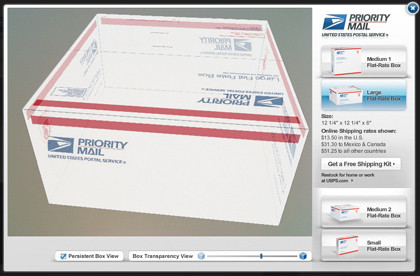The web developer's guide to 3D site building
Tech bringing a new sense of depth to website design
Pros and cons of Flash
The continued success of Flash Player owes in part to Adobe's development of the platform, but is also largely due to its penetration as a browser plug-in, and the increasing usefulness of AIR apps in bringing it to the desktop. However, Flash's main limitation will always be performance.
Even though speed is improving, it will never match platforms developed for specific tasks like 3D. And it will rarely be as search engine-friendly or usable as an XHTML/JavaScript-based site.
Its non-inclusion on the iPhone will certainly hinder its use to deliver content to the mobile web. So it's essential to be aware of what else there is in the pipeline for rich media other than Flash.
New ways to interact
Increasingly, alternative input doesn't mean doing away with the mouse and keyboard, but complementing them in different ways:
Gesture Recognition: An interesting alternative to point and click that's recently seen a few commercial examples, including the experimental Toshiba site.
Sign up for breaking news, reviews, opinion, top tech deals, and more.
Microphone: The microphone can be used as an interesting form of alternative input within Flash. It's used well on the GE Smartgrid site, where blowing into the microphone rotated windmills within the Augmented Reality scene.
Camera: Within Flash, the most common form of alternative input is the camera. The introduction of BitmapData in Flash Player 8 gave the ability to analyse frames of a video (from a webcam or otherwise) on a frame-by-frame basis.
Since then, experimentation has been rife. It's possible to analyse the BitmapData from video input for certain colours, determine edges so that you can interact with them or compare previous and current frames to search for changes and detect movement just to name a few possibilities.
Augmented Reality: The latest application of alternative camera input is of course Augmented Reality. The development of the FLARTookit made available by Saqoosha has enabled anyone to have a crack at using this technology within Flash. However there are specialist applications designed specifically to bring AR to a user's desktop and web browser, including MagicSymbol and Mataio.
Beyond the wow factor
There's no doubt that this technology is still in the wow-factor stage. GE, BMW, Toyota, Eminem and even Papa John's Pizza, US Postal Service and Oasis soft drinks have all adopted AR to bring us some fantastic examples of how it can be used to capture customers' imagination.

PACK MENTALITY: US Post has introduced a simulator to see if your stuff will fit into one of their boxes
Inevitably, Augmented Reality is likely to move from just being cool to actually being really useful. Certainly its use on mobile devices combined with social media (social AR) holds great potential. Hinting at what's possible are applications like Wikitude and Sekai Camera for the mobile and ideas like Sixth Sense (a wearable device with a projection screen).
These take information from the public domain and combine it with information pertaining to the users' current situation, enriching their experience and providing information that would otherwise not be easily accessible.
Momentum toward a more natural interaction with computers is especially evident in the gaming world. Microsoft's new Xbox project, Natal, totally removes the need for any kind of controller. Sony has also unveiled its wand controller, which tracks the position of a glowing sphere in your hand to interact with the virtual world.
It's certain that 3D, physics and Augmented Reality will continue to transform the online world, creating a richer and more user-friendly environment. Future innovations will blur the lines between reality and fiction and bring more useful information to our fingertips faster than ever.
For web builders, it is essential to be aware of these trends and how the internet is adapting as a tool for marketing. Developing and designing for the web isn't so much designing a web page any more, as designing a web experience.
Current page: Augmented reality and other new ways to interact
Prev Page Taking web design to the next level Next Page Rich media alternatives to Flash